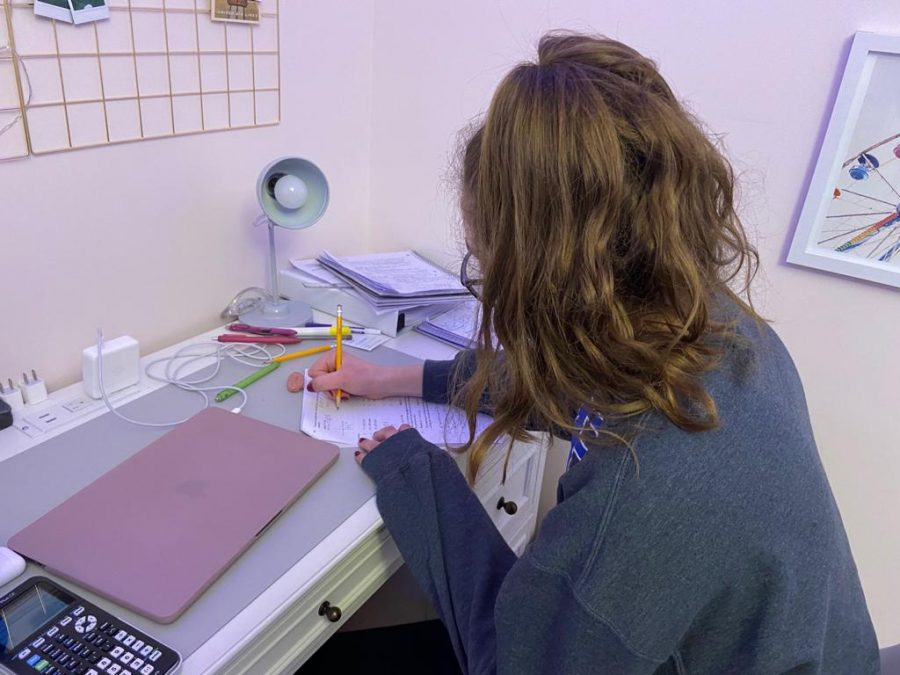Opinion: There should be more asynchronous classes
Photo courtesy of Zoe Fischman
Junior Zoe Fischman works on her math homework during an asynchronous period.
February 22, 2021
Before I switched to CESJDS, my public school schedule in spring 2020 was heavy on asynchronous classes. In contrast, my schedule at JDS now includes a majority of synchronous classes. Because of both my public and private school experiences, I now realize just how helpful and valuable asynchronous classes are.
Asynchronous classes allow me to do work independently which helps me to pace my workload. Additionally, asynchronous classes give me a short break from live instruction and enable my mind to rest.
In an article from Education Week, reporter Mark Lieberman writes about the importance of balance.
“Neither approach [synchronous or asynchronous] is sufficient all on its own, but there are situations and subjects that do tend to favor one of the two strategies,” Lieberman says. “Experts say the best recipe for success is to mix the two.”
The question is truly based on the balance between synchronous and asynchronous learning rather than whether one is more beneficial than the other. Academic Dean Aileen Goldstein looks at the balance of synchronous to asynchronous classes. There are key details during distance learning that she specifically pays attention to.
“[We are] looking to balance face-to-face time and social interactions through learning [synchronous time],” Goldstein said. “We are also looking to balance the ability for students to step away from the screen and organize their own time so they can get screen breaks [asynchronous time].”
Goldstein also said that the key to a successful schedule is the balance between students socializing through learning and screen breaks. So what should the exact balance between synchronous and asynchronous classes be?
My answer is that for every two asynchronous classes, there should be one synchronous class. Students would have more time to perform what they learned in their synchronous period. This two to one ratio would allow students to learn how to work independently and efficiently.
Having more asynchronous classes would benefit students who learn at all paces. If one student works faster than another, both students would have an equal opportunity to be successful. The flexible work schedule would allow some students to do their work quickly and move onto other work while allowing others to spend more time on each assignment.
“Also, we have students that work at many different paces, and it could get frustrating if you are at either end of the group, like, ‘I can never catch up’ or ‘I’m so bored,’” Goldstein said. “So I think that [asynchronous] offers us a balance of when students can work at their own pace and whatever time works best for them.”
One last idea that Goldstein thought would be an interesting solution to the synchronous versus asynchronous problem would be to have a class that is a mixture of both. For example, a class period would start and end synchronously, but would have asynchronous work in between.
It isn’t a surprise that a high school student like myself is arguing for more asynchronous classes. Many of my classmates love asynchronous learning due to the lack of supervision, but the real importance of asynchronous learning is that it teaches independence while giving students the flexibility they need to complete their work.

















